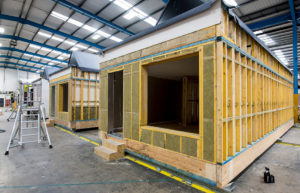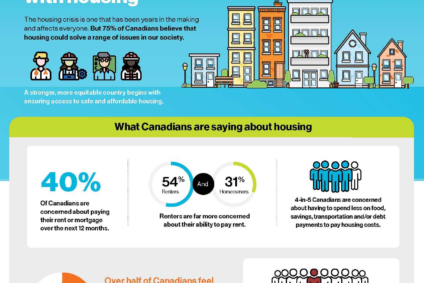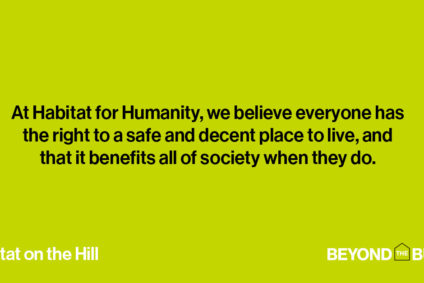Canadian Housing Affordability
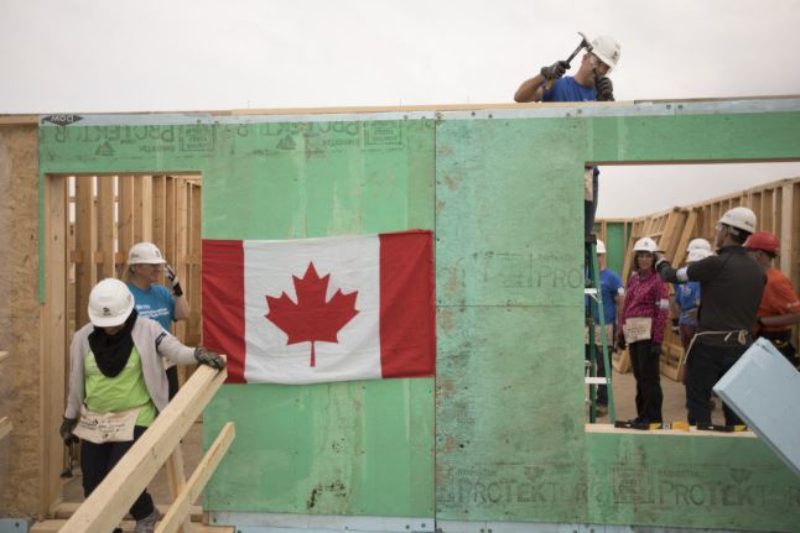
A National Crisis
Toronto and Vancouver are two of the wealthiest cities in Canada and even they have failed to meet the housing needs of low-income families. And it isn’t just low-income households that are struggling with this lack of housing affordability, even middle-income families are now having issues finding appropriate housing options in these affluent cities.
To simplify Canada’s affordable housing crisis, real estate brokerage, Zoocasa, has visualized how long it would take a median-earning household to save for a down payment on a typically priced house in 15 different Canadian cities.
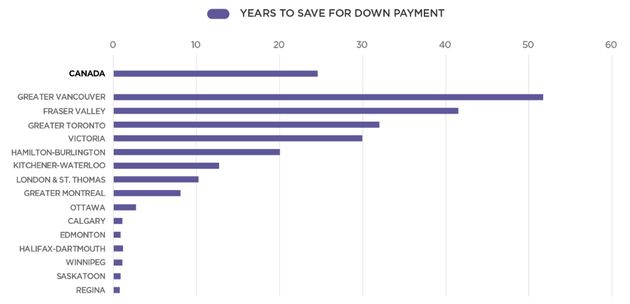 Image courtesy of Zoocasa
Image courtesy of Zoocasa
Shockingly, their survey has found that it would take the average household 52 years to save for a down payment for a house in Vancouver, and that’s when saving 20% of the median income every single year. By comparison, it would take 32 years to save up for a home in Toronto, which is still a staggering result.
Canada by Comparison
The McKinsey Global Institute (MGI) has recently published a report “Tackling the world’s affordable housing challenge” that addresses housing affordability around the world. They found that if current trends in urbanization and income growth continue, the global affordable housing gap will affect 1 in 3 urban dwellers by 2025, amounting to about 1.6 billion people living in substandard housing across the globe.
MGI has also found that the affordable housing gap currently stands at $650 billion per year and is predicted to increase from there. Urban populations continue to expand and current trends suggest that there could be over 100 million more low-income urban households by 2025.
So what does that mean for Canadians?
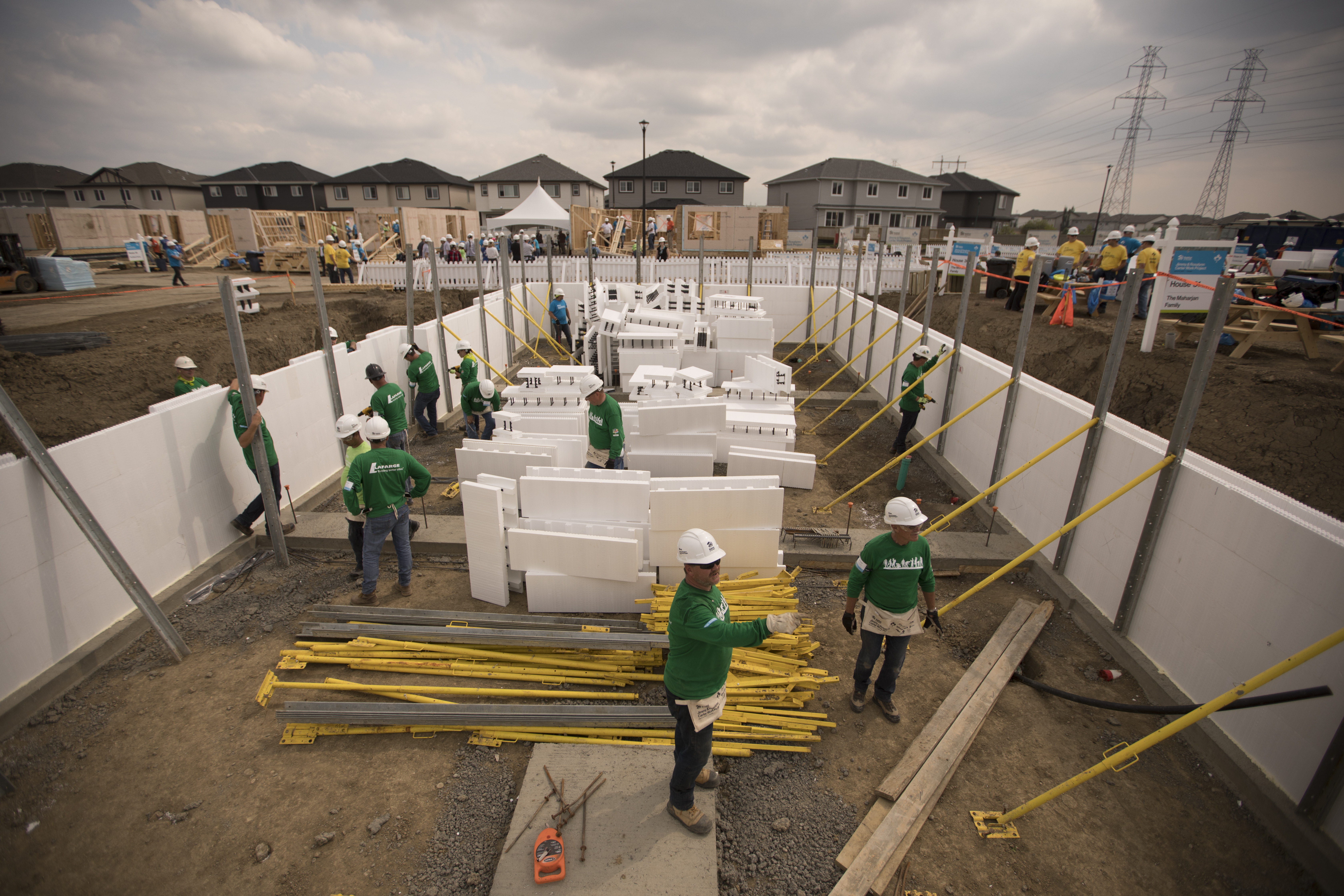
When taking a look into the inadequate housing market, there is much that Canadian cities can learn from their neighbours south of the border. Housing affordability is a major concern in L.A., with 1.9 million households in L.A. County affected. As affordable options decrease, rent rates spike, affecting even more households. This housing shortage is a huge contributor to L.A.’s rising homelessness, which has increased by a staggering 16% in the city just in the past year.
Due to their crisis, L.A. has made efforts to reconcile. Instead of relying solely on the public sector, they are replacing past subsidy-driven approaches with ones that are incentive-driven. These incentives include “density bonuses” for developers who build larger projects near transit in return for commitments to provide affordable housing units. Since November 2017, these incentives have helped create almost 4,000 affordable units near mass transit. The city has subsequently made moves to simplify the zoning code, facilitate the permitting process, and speed up high-priority projects by providing case-management services. L.A. County has also significantly increased funding through various programs, including the Affordable Housing Trust Fund and No Place Like Home.
The McKinsey report urges L.A. to embrace prefab construction to provide modular and tiny homes and co-living developments in order to cut down on construction costs. “Projects utilizing both nontraditional housing formats with prefab construction could reduce per-unit costs by some 50% – while minimizing the number of buildings that must go up and bringing more new housing online faster,” sites the report.
Looking to the Future
It is highly likely that housing affordability will become an even larger issue in the future for growing Canadian cities. As the populations continue to increase and attract more business to the cities, affordable housing options will continue to plummet.
As an innovative community builder, Habitat for Humanity Halton-Mississauga-Dufferin (Habitat HMD) has already started to explore new and innovative housing options to provide affordable and accessible opportunities to families in our community. These strides include tiny homes, modular housing, and our GAP housing unit in Mississauga that addresses households earning a median income.
 Source of photo: fusionstone.ca/en/what-is-the-tiny-house-movement/?
Source of photo: fusionstone.ca/en/what-is-the-tiny-house-movement/?
Thanks to an exciting partnership with the Milton School Board and in collaboration with their motivated construction students, Habitat HM has commenced construction on its first 3 tiny houses! Tiny homes offer endless possibilities for low-income households and Habitat HM will continue to work with schools in order to foster social conscience and deliver outcomes that will change the lives of local families.
Modular housing has proven to be faster and more cost-efficient and so Habitat HM is ramping up its build process by shifting its operations to modular construction. On receipt of the build permit, these quality modular homes can be precision-built and ready for delivery in just under 6 weeks, enabling an exponential increase in construction efficiency.
Habitat HM has also recently offered a GAP housing unit, addressing Mississauga’s “missing middle” who are making a moderate income but still don’t have access to affordable housing. This GAP approach to housing in opening doors for these families, an entrée into the housing market, and an opportunity to afford a home.
These innovative build projects are only the tip of the iceberg for what Habitat for Humanity Halton-Mississauga has in store for the future of housing affordability. If you want to support the fight for affordable housing in your community, please donate here. Through collaboration and innovation, we will realize our mission of safe and accessible housing for all.
About Habitat for Humanity Halton-Mississauga
Habitat for Humanity Halton-Mississauga is a proud member of our national organization Habitat Canada and is one of 54 local Habitat affiliates across our country. Habitat for Humanity brings communities together to help families build strength, stability, and independence through affordable homeownership. We provide a solid foundation for better, healthier lives in Canada and around the world. You can find out more about Habitat Canada at habitat.ca.
